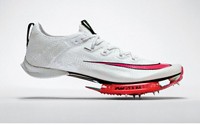Advertisement
Grab your lab coat. Let's get started
Welcome!
Welcome!
Create an account below to get 6 C&EN articles per month, receive newsletters and more - all free.
It seems this is your first time logging in online. Please enter the following information to continue.
As an ACS member you automatically get access to this site. All we need is few more details to create your reading experience.
Not you? Sign in with a different account.
Not you? Sign in with a different account.
ERROR 1
ERROR 1
ERROR 2
ERROR 2
ERROR 2
ERROR 2
ERROR 2
Password and Confirm password must match.
If you have an ACS member number, please enter it here so we can link this account to your membership. (optional)
ERROR 2
ACS values your privacy. By submitting your information, you are gaining access to C&EN and subscribing to our weekly newsletter. We use the information you provide to make your reading experience better, and we will never sell your data to third party members.
Analytical Chemistry
NIH Launches Competition For A Better Alcohol Biosensor
With cash prize, agency hopes to spur development of a less obtrusive device for monitoring alcohol consumption
by Andrea Widener
March 20, 2015
| A version of this story appeared in
Volume 93, Issue 12

A chunky bracelet or a fancy button-down shirt might be the next alcohol biosensor, if Kathy Jung has her way.
Jung is a program director at the National Institute on Alcohol Abuse & Alcoholism (NIAAA), which this week launched a $300,000 competition to build a less obtrusive alcohol biosensor than ones currently available. Such a device could make alcohol research easier, assist alcohol abuse treatment professionals, and improve monitoring for patients with medical conditions that are exacerbated by alcohol.
Currently, the criminal justice system requires some offenders to wear bulky, black biosensors to monitor their alcohol use. NIAAA-funded scientists have tried to use these sensors for research involving the general public, such as college students or those in alcohol treatment programs. But many potential participants balk at wearing those sensors because the devices are so obtrusive.
“Things will just explode if we have a sensor that is more acceptable for patients and practitioners,” says Brown University’s Nancy Barnett, who studies ways to help people stop drinking. “This prize is exactly the kind of boost that I think the field needs.”
Beyond research and treatment, Jung thinks there could also be a market for alcohol sensors among companies that want to verify their employees’ sobriety or even among conscientious drinkers who want to know when they have had one too many. “People are so willing to monitor everything right now,” she says.
The recent jump in the market for personal sensor technology led NIAAA scientists to think the time is right to encourage sensor developers to turn their attention to alcohol biodetection. The competition is for a wearable, discreet device that can monitor alcohol consumption in real time and send the resulting data to a computer or smart device.
NIAAA will award $200,000 for first place and $100,000 for second. Prototypes are due Dec. 1, and the agency aims to announce a winner in February 2016.
“The sky’s the limit,” Jung says. “Please surprise us.”




Join the conversation
Contact the reporter
Submit a Letter to the Editor for publication
Engage with us on Twitter